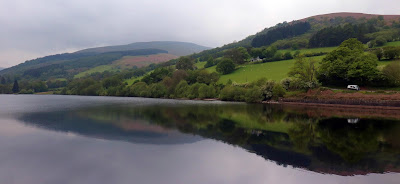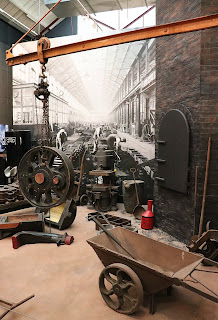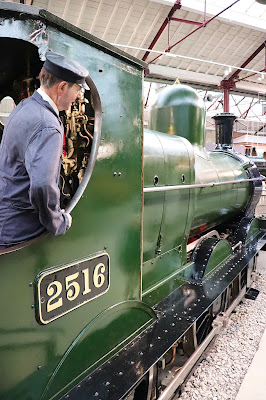I cannot get over how this is the longest into a new year I have gone without doing another sail. I did my first launch of the year in mid January and I would have normally done a few day sail trips by Easter but for various reasons, my second launch of the year has been a long time in arriving.
There are a number of reasons why this has happened - a new electric bike being one of them and then some trips in 'Florrie' our touring caravan; trips home to see family as well. It all adds up.
Anyway, yesterday was a spur of the moment decision - high tide at 0915 4.8m. Winds were SW/WSW 8 - 11 knots with occasional gusts around 14 knots. Hazy sunshine and variable cloud cover. It was warm in the sunshine but less so when the clouds covered the sun.
There were no firm plans for the day, just a mooch across to Cawsand Bay and some sailing up and down the breakwater. I decided to do some setting sails so that Arwen would sail herself on a close and broad reach which she did admirably. I am always amazed at how steady she holds her course when the respective sails are balanced. The tiller and main sheet can be locked off in steady breezes and as long as I don't move around too much to upset trim and balance, Arwen will hold a steady course over a mile or two with no problem.
And so it was a pleasant hour passed in such endeavours; lining up a point and transit on one of the Sounds west or east shore lines and then balancing sails and seeing how well she tracked on her heading.
And all this was achieved with a malfunctioning jib. I guess it was a lesson in seamanship - check that everything works before you leave the launch site and don't just assume it will. The Barton Furler has never failed to deploy in the nine years I have been using it but this time the line on the spool jammed somehow. Arwen's bowsprit is not one that will support my ample weight and so there was no shimming along it to manipulate the furler. The jib unfurled part way and that was it. It wouldn't budge - no furler whatsoever. So I sailed with half a jib and at the end of the day, released the entire jib sheet to drop the sail in to the boat. Arwen tacked just fine.
Some heaving to took place to add in a new reefing line. With tiller locked to leeward, jib backed, centreboard raised, main sail let out fully to leeward and mizzen tightened up, Arwen sort of drifted sideways and forwards at a slow speed giving me time to tidy her up, change video camera batteries and do some other bits and pieces.
Careful examination of Arwen during launch and retrieval has shown some maintenance is required. The lower rub rails are showing black staining and odd tiny patches of softer wood - so some sanding and resealing are required urgently. Patches of grey are showing on the hull bottom where the plastic rigid rollers of the trailer have taken their toll. Thank heavens Arwen has a fibre glassed hull bottom with five coats of aluminium flake paint, 4 coats of pre-kote undercoat and three coats of international Toplac. Bomb proof - well so far - touch wood.
It was good to see the main sail set properly as well. The new tack parrel bead arrangement at mast base along with new downhaul system and a new arrangement for tying top yard closer to mast means that the dreaded creases are almost all gone. The new snotter arrangement which leads back to aft cockpit means the boom can have finer adjustments during the sail. Pity it has taken me so long to work out this aspect of sail setting!
And so to plans for this season. Priority one is to finish the Salcombe cruise series of videos with overnights up at Kingsbridge, South Pool and Frogmore Creek. Then I want to join the DCA (Dinghy Cruising Association) July rally down at Falmouth. I'm thinking of actually sailing down there and back with stop offs at Fowey and Mevagissy. This year I'd like to sail up the Fowey to Lostwithiel and a nice trip around the coast from Plymouth to Dartmouth and up the Dart to Totnes would be fun as well. There is a DCA rally up the Dart in mid June but as yet for various reasons I am not sure I can yet make that one.
I will have to dig out my Day Skipper coastal passage planning notes as I can never remember the chart work bit and how to calculate tidal streams, tidal drift etc. My brain needs a little bit of exercise.
Hopefully by July my new oars will be finished. 9' 6" they are a work in progress and will have a workman like finish! Basically painted blades and square upper loom section. Mid loom will be varnished and the handles left bare. I'm not quite sure how to reinforce the blade tips yet - I do have some fibreglass tape left over from another project so I suppose I could use that. I will need to scrounge some leather from somewhere for the loom protection as well. The waxed thread I have plenty of.
A video diary of this day sail will be forthcoming shortly........I will keep you posted.
There are a number of reasons why this has happened - a new electric bike being one of them and then some trips in 'Florrie' our touring caravan; trips home to see family as well. It all adds up.
Anyway, yesterday was a spur of the moment decision - high tide at 0915 4.8m. Winds were SW/WSW 8 - 11 knots with occasional gusts around 14 knots. Hazy sunshine and variable cloud cover. It was warm in the sunshine but less so when the clouds covered the sun.
There were no firm plans for the day, just a mooch across to Cawsand Bay and some sailing up and down the breakwater. I decided to do some setting sails so that Arwen would sail herself on a close and broad reach which she did admirably. I am always amazed at how steady she holds her course when the respective sails are balanced. The tiller and main sheet can be locked off in steady breezes and as long as I don't move around too much to upset trim and balance, Arwen will hold a steady course over a mile or two with no problem.
And so it was a pleasant hour passed in such endeavours; lining up a point and transit on one of the Sounds west or east shore lines and then balancing sails and seeing how well she tracked on her heading.
And all this was achieved with a malfunctioning jib. I guess it was a lesson in seamanship - check that everything works before you leave the launch site and don't just assume it will. The Barton Furler has never failed to deploy in the nine years I have been using it but this time the line on the spool jammed somehow. Arwen's bowsprit is not one that will support my ample weight and so there was no shimming along it to manipulate the furler. The jib unfurled part way and that was it. It wouldn't budge - no furler whatsoever. So I sailed with half a jib and at the end of the day, released the entire jib sheet to drop the sail in to the boat. Arwen tacked just fine.
Some heaving to took place to add in a new reefing line. With tiller locked to leeward, jib backed, centreboard raised, main sail let out fully to leeward and mizzen tightened up, Arwen sort of drifted sideways and forwards at a slow speed giving me time to tidy her up, change video camera batteries and do some other bits and pieces.
Careful examination of Arwen during launch and retrieval has shown some maintenance is required. The lower rub rails are showing black staining and odd tiny patches of softer wood - so some sanding and resealing are required urgently. Patches of grey are showing on the hull bottom where the plastic rigid rollers of the trailer have taken their toll. Thank heavens Arwen has a fibre glassed hull bottom with five coats of aluminium flake paint, 4 coats of pre-kote undercoat and three coats of international Toplac. Bomb proof - well so far - touch wood.
It was good to see the main sail set properly as well. The new tack parrel bead arrangement at mast base along with new downhaul system and a new arrangement for tying top yard closer to mast means that the dreaded creases are almost all gone. The new snotter arrangement which leads back to aft cockpit means the boom can have finer adjustments during the sail. Pity it has taken me so long to work out this aspect of sail setting!
And so to plans for this season. Priority one is to finish the Salcombe cruise series of videos with overnights up at Kingsbridge, South Pool and Frogmore Creek. Then I want to join the DCA (Dinghy Cruising Association) July rally down at Falmouth. I'm thinking of actually sailing down there and back with stop offs at Fowey and Mevagissy. This year I'd like to sail up the Fowey to Lostwithiel and a nice trip around the coast from Plymouth to Dartmouth and up the Dart to Totnes would be fun as well. There is a DCA rally up the Dart in mid June but as yet for various reasons I am not sure I can yet make that one.
I will have to dig out my Day Skipper coastal passage planning notes as I can never remember the chart work bit and how to calculate tidal streams, tidal drift etc. My brain needs a little bit of exercise.
Hopefully by July my new oars will be finished. 9' 6" they are a work in progress and will have a workman like finish! Basically painted blades and square upper loom section. Mid loom will be varnished and the handles left bare. I'm not quite sure how to reinforce the blade tips yet - I do have some fibreglass tape left over from another project so I suppose I could use that. I will need to scrounge some leather from somewhere for the loom protection as well. The waxed thread I have plenty of.
A video diary of this day sail will be forthcoming shortly........I will keep you posted.


























































































